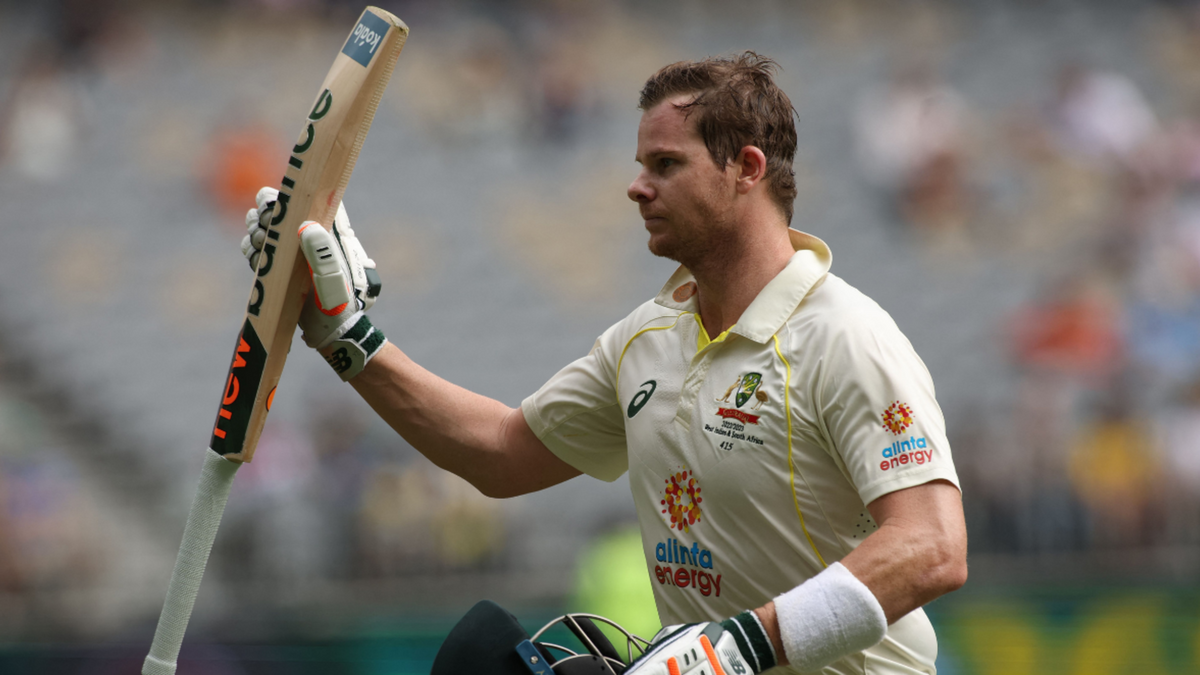
If Steve Smith ever truly went away, then now he is definitively back.
How do you define a slump in Test cricket? At what point does a few low scores become a patch of poor form become a slump become terminal decline? For 18 months, or perhaps longer, Smith, by his own high standards, struggled. But by anyone else’s, he was still a perfectly decent Test batter.
From the first game of 2021 through to July 2022 , he didn’t make single Test hundred. But he still averaged 37.80, with six half-centuries. Not bad, but not his usual outlandishness.
You can take it back further too. Going from the end of the the 2019 Ashes – a series dominated by Smith like few before it – to the same end date, he averaged 38.62, with a solitary ton. A near-three year stretch with only one three-figure score. Again, those aren’t bad numbers. Anyone else would be perfectly happy with them. But Smith is not anyone else. In the previous three years, he had made 11 hundreds. And that included him being banned for a year for his involvement in the Sandpapergate scandal.
In Smith’s imperial phase, from the start of the 2013/14 Ashes until the end of the 2019 Ashes, he averaged 72.18, with 25 hundreds in 100 innings – one every four, exactly. There has never been a streak quite like it – Smith holds the record for the most runs in a 100-innings stretch. The question was not whether there was any doubt over Smith’s place in the side, but whether he would ever again scale that sort of peak, and as the relative lean trot extended onwards, it seemed the answer was no.
Now, Smith is back, and back near his very, very best. A double-hundred against West Indies might not rank among his most famous Test innings, but it took his overall Test average back up to 61.47, second after Don Bradman for those with at least 2,000 Test runs. And in his previous game, against Sri Lanka, he played an innings which does compare with his best for skill and importance. His unbeaten 145 was one of only two scores above 40, displaying his mastery against the turning ball in helpful conditions.
After his unbeaten 80 in the first ODI against England, Smith remarked that “it was probably the best [he had] felt in about six years”. Considering the series that time-span takes in – the 2019 Ashes and a supreme campaign in the 2016/17 Border-Gavaskar Trophy among them – it’s a bold claim. But it’s also an honest one. Smith’s relationship with his hands is complicated one, and only rarely does he truly feel he’s cracked it, even if he’s still managing to churn out runs.
“The start of last summer, I tried to get my hands back to where they were in 2015. I feel like I’m staying a bit more side-on now and I’ve got my feet and hands in sync together. [Thursday] was probably the first time I’ve actually had extended time in the middle with that change.”
A look through how his stance has changed over the years shows how his technique has evolved. Smith is now 33 years old – not young, but also an age after which some batters find their best form. Shivnarine Chanderpaul averaged more than 60 after his 33rd birthday, while Brian Lara and Kumar Sangakkara each averaged 58.
After another Test against West Indies, Smith will face up to a monumental year. He has unfinished business against South Africa, who Australia haven’t beaten since 2014, and against whom it all came crashing down at Cape Town. Then it’s a tour of India and a likely World Test Championship final, two final frontiers for undisputed greatness, and then another chance at a first Ashes series win in England.
Smith might have rediscovered his best form at the best possible time. The rest of the world should watch out.








